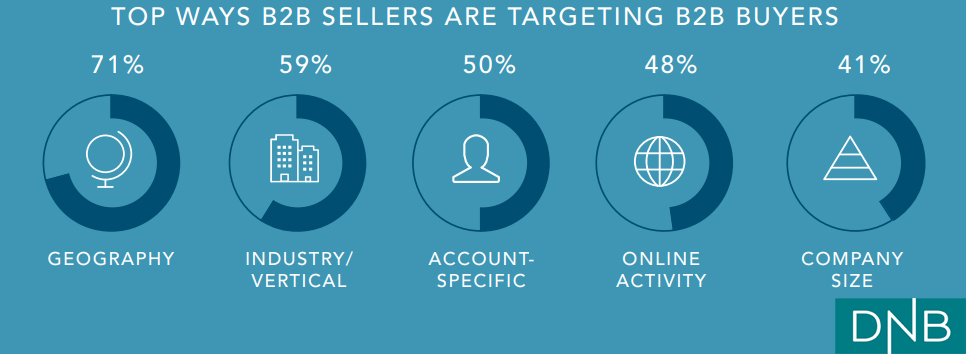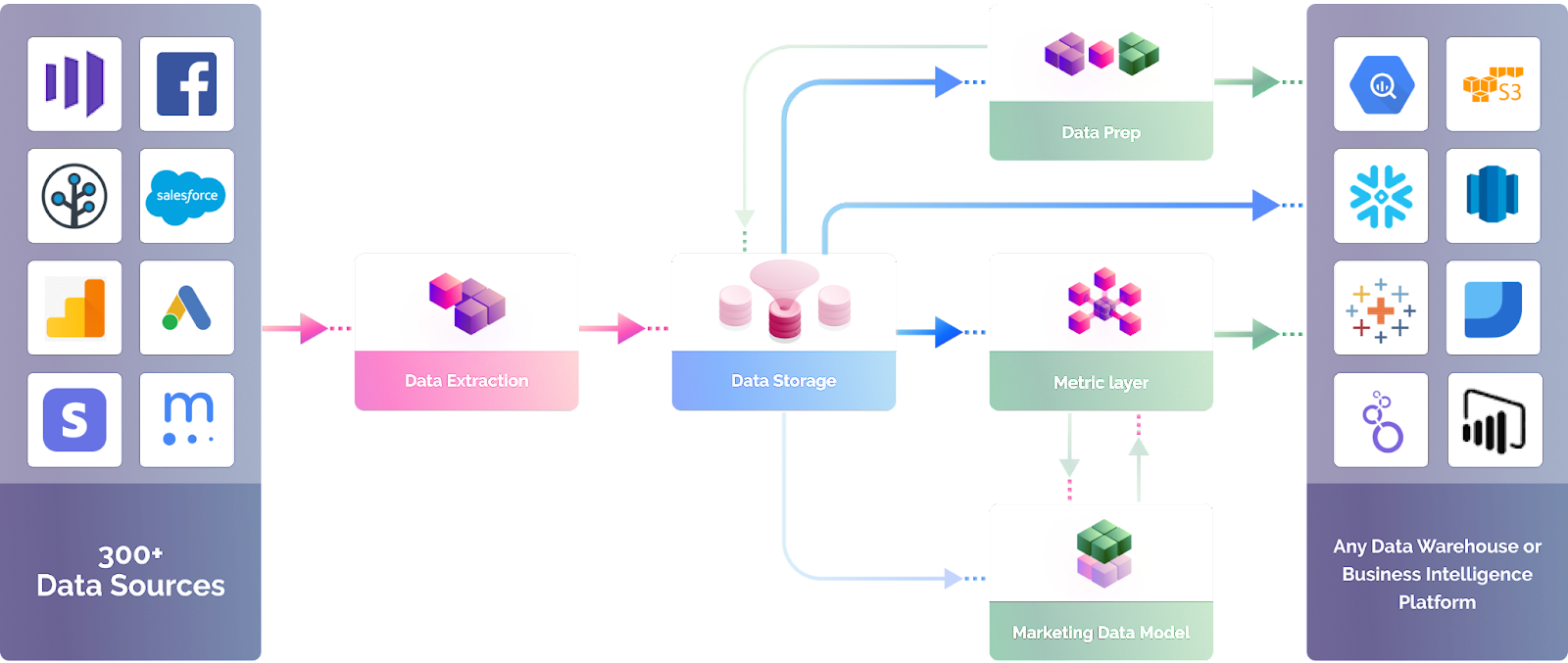The proliferation of location-based technology has driven geotargeting to the frontlines of B2B and B2C advertising strategies.
A 2019 report by Factual revealed that 89% of marketers experienced higher sales, 84% reported increased engagement, and 78% saw a rise in response rates after adopting location-based marketing and geotargeting ads.
Through geotargeting marketing, organizations are able to leverage location data in privacy-compliant ways to deliver marketing content to prospects within their chosen location.
In this guide, we will explore what geotargeting is, how it works, and how you can use this system to make your PPC campaigns more effective.
Learn how to monitor the marketing performance across different channels [Free guide]
What is Geotargeting, and How Does it Work?
Geotargeting is simply the process of positioning advertising and marketing campaigns to focus on prospects within a specific location.
This system allows marketers to leverage privacy-compliant location data from digital devices to create consumer personas and deliver unique content relevant to their prospects’ locality, interests, and behavior.
Geotargeting has become a popular system among B2B organizations, with 71% of B2B sales and marketing teams reportedly using this method for marketing and advertising.
Here’s how geotargeting works in a nutshell
Through geotargeting, marketing teams specify a region or a set of areas as the only locations they want their marketing content delivered.
For instance, in your PPC campaign, you can set your geotargeting parameters using:
- Countries
- Areas within countries
- Radius around a specific location, and more.
Having chosen your preferred locations, your ad platform uses data from IP addresses, GPS trackers, device IDs, cell towers, and more to find prospects that match your criteria.
Location is not the only targeting option. You can also narrow your targeting to reach prospects that match specific interests, demographics, and behaviors.
Using location-based data requires full consent for privacy compliance. Thus, while creating location-based audiences and analytics, it is important to aggregate the data streams to protect your users’ privacy.
Why Enterprise Marketers Love Geotargeting
Geotargeting started out as the holy grail for smaller local businesses. But it has, over the years, proven to be just as beneficial for larger corporations. In fact, 84% of marketers currently use location targeting, and 94% of those who don’t are planning on adopting this strategy in the future.
The US companies alone plan to spend almost 39 billion dollars on mobile geotargeting campaigns in 2022.
Here are some of the main benefits of leveraging geotargeting for multiregional PPC campaigns.
Increased engagement and response rates
Geotargeting usually results in a smaller group of target audiences. However, 84% of marketers confirm that location targeting helps them generate higher customer engagement. Also, 78% of surveyed marketers report an increase in response rates. These results are attainable simply because geotargeting advertising gives you access to prospects who find your content more personalized and relevant.
Relatively lower advertising costs
There are such things as wasted impressions. These come from showing ads to irrelevant audiences and ultimately make advertising costlier than it should be. Geotargeting eliminates this situation to a large extent. When your target audience is well-defined, ad networks will see your ads as high quality and ultimately reward you with a lower CPC.
Building local authority and relevance
By running location-based marketing, organizations establish a level of brand awareness and authority at the local level. This makes building great relationships and driving engagement through remarketing campaigns more straightforward.
Optimized for scaling
Analyzing a broad campaign will usually reveal locations and audience segments that are performing better than others. To optimize such a campaign, you must focus on the regions and segments that bring the best results.
With geotargeting, you won’t only be able to optimize for high-value locations, you’ll also be able to hone in on other factors, like interests, behaviors, and demographics, boosting your chances of generating higher returns.
Challenges of Running Geotargeted PPC Campaigns
Incorporating geotargeting in your PPC strategy is easy to do, but tough to do well. Geotargeting is a tricky strategy. It can easily result in wasted impressions and a burnt budget if done wrong.
Before diving into geotargeting, here are some challenges you should know, along with tips for optimal results.
Tricky optimization
Here’s an example scenario: California City and California State aren’t quite the same, except for their name. However, this usually poses a problem for advertisers using the word “California” in search ads. Advertisers using Google Ads location targeting may sometimes run ads for California City only to have the same ads shown to searchers across the entire state of California. This will usually result in irrelevant impressions and wasted budget.
Regardless of where you’re targeting, it is crucial to double-check locations and their keywords when setting up your campaigns. If you want to be very granular with your targeting, you should manually exclude regions you do not wish to cover.
Marketers also waste their ad budgets on oversights with time zones. Failure to set multiple campaigns matching the time zones in your target locations will usually result in your campaigns running out of budget before getting meaningful results.
To further increase your chances of getting better results, ensure you make your location-based marketing content as natural as possible to resonate with your target audience. This means using the same currencies, dialects, spellings, and date formats. For instance, you should use British English rather than American English when running campaigns in the UK, and vice versa.
Heavy reliance on mobile data and risks of data scarcity
Research shows that the number of mobile users willing to share location data has dropped by 2%. This represents a drop in the volume of location data available to advertisers across all industries.
Furthermore, geotargeting tailors adverts to very specific audiences. While this allows you to create and deliver highly relevant content, your campaign can be affected by data scarcity, depending on the size of your target location and how niche your target audience is.
A reasonable solution to this challenge is to ensure you make the best use of the data at your disposal. This can be achieved by investing more effort and resources in strategically important regions. These may include areas with high competitor presence, locations with branch offices, regions with a history of high-converting leads, etc.
Reviewing campaign performance
This is arguably the biggest challenge associated with geotargeting.
Geotargeting enables enterprises to launch multiple campaigns for different audiences in varying locations, and each campaign generates lots of data. It’s important to review each campaign’s performance to know the efficacy of your strategies, as well as the regions, channels, and products that are getting more traction, all while optimizing on the go.
This is where the big challenge lies. Let’s say your company has a presence in multiple regions and subregions. And on top of that, the company is running separate campaigns for various products across different locations.
The company’s regional offices might be using a different combination of platforms and analytics tools for PPC management, depending on what works best in their respective locations. This will result in a large amount of disparate data and mismatching metrics when you try to aggregate data across all regional offices.
To generate digestible reports on the overall advertising performance and costs for each product brand and channel, marketers will need to manually (and painstakingly) harmonize the data from these platforms. This can take ages to accomplish, making it difficult for executives to get a timely and holistic view of the overall performance, prolonging the decision-making process for global marketing investment and strategy.
To cut through this challenge, enterprise marketers leverage the power of data centralization and Extract, Transform, Load (ETL) solutions.
👉 Learn more in our beginner's guide to ETL processes
These platforms work by collecting marketing data from your entire marketing stack and consolidating them into one data warehouse. This allows marketers and executives to analyze their campaigns, generate reports, and optimize their marketing strategies more efficiently.
How Improvado Helps Manage International PPC Campaigns
Improvado is a Revenue Data Platform designed to help marketing teams access mission-critical insights that boost campaign performances and generate higher revenue for their organizations.
The platform makes geotargeting analytics and PPC management significantly easier by automatically consolidating data from over 300 data sources and harmonizing naming conventions across an organization’s marketing channels. That way, marketing teams will only need to focus on being creative and optimizing PPC campaigns around metrics that are relevant to their objectives.
Improvado revenue data platform in action
One beverage company with over 40 products and a strong presence in 141 countries struggled to track and generate reports on all its campaigns due to the increasing amount of data it generated across different platforms, brands, regions, and subregions.
To create reports for the executive team, the marketing team would manually integrate data across various data sources. This was a time-consuming process that significantly slowed decision-making processes.
Until Improvado stepped onto the scene.
Through Improvado, the company got access to:
- A custom cross-channel data aggregation and transformation pipeline aligned with the company’s marketing objectives
- An automated process for assembling data from multiple paid marketing data sources, saving the team days of manual work
- Editable lookup tables on brand and geo-dimensions definitions that allow changes on the customer’s side and thus enhance the flexibility of the entire solution
How Improvado saves ASUS 90 hours on manual reporting weekly
ASUS, a multinational computer and phone hardware and electronics company, came to Improvado seeking help with aggregating the enormous streams of data they generate from their multiregional campaigns.
The company has a presence in 32 countries, operates around 50 service sites, and has over 400 service partners globally.
Its size, along with the scale of its marketing operations around the world, made it hard for the executive team to get a timely, holistic view of their campaign performances. There was a lack of granularity in reports and dashboards, and ASUS experienced situations where data analysis results were tarnished by duplication.
Consequently, the executive team from the headquarters couldn’t make data-driven decisions as quickly as they wanted.
Improvado solved this problem by:
- Delivering a bespoke solution that the company’s marketing team could apply on a global scale
- Enabling scalable data analysis through a fully managed, serverless data warehouse
- Reworking the search function to query a word as a whole rather than check for keyword occurrence—a tweak that dramatically decreased errors and duplicates
- Providing access to multiple levels of data granularity and much more
Bottomline
Geotargeting has proven time and again to be a very innovative marketing strategy. However, it doesn’t come without challenges and risks.
To effectively manage multiregional PPC campaigns, it is vital to take note of the related challenges ahead of time and devise creative ways of beating them, as discussed in this guide.
Ultimately, your success with geotargeting heavily depends on how fast you access and how well you can utilize the data at your disposal.
If you want to learn more about how Improvado can help you get better results with your multiregional PPC campaigns, schedule a call with an expert.
500+ data sources under one roof to drive business growth. 👇
.png)
 (1).png)
.png)

.png)











 (1).png)

.png)





.png)


.png)
.png)
